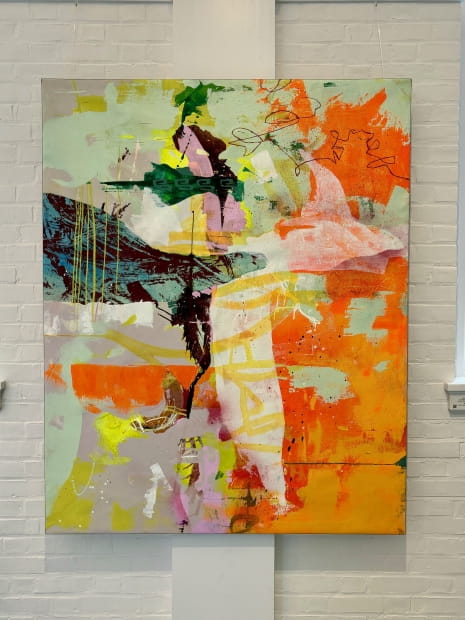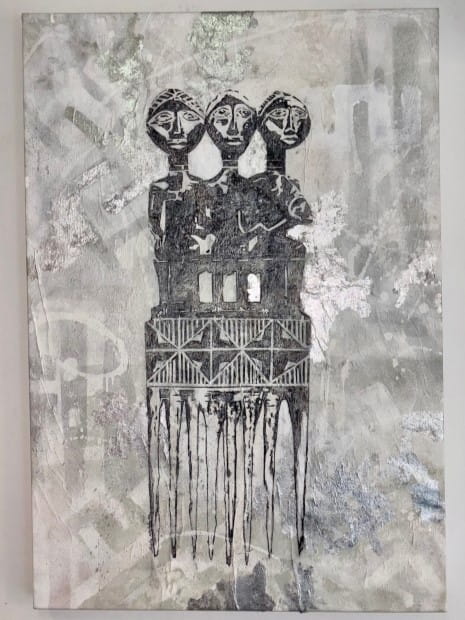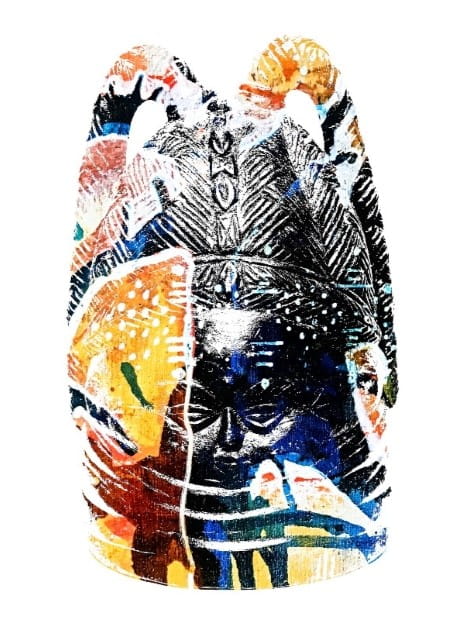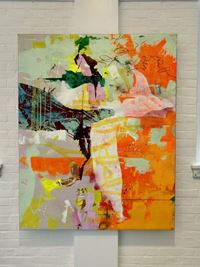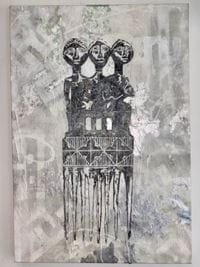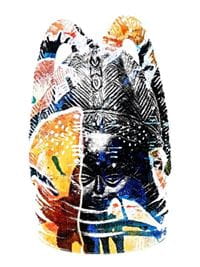Community Impact
Chance meeting in Morocco lands artist’s work at Randall Children’s Hospital
February 13, 2024
Home > About > News & Media > Story Center
Aisha Nailah’s path to becoming a professional artist was anything but a straight line. She spent time as a special education teacher before returning to school to earn her bachelor’s degree in art therapy.
In an experimental art class, Aisha and her fellow students were given a simple assignment to create something. It didn’t matter what, just to look at life in a different way. Most of the students struggled with the task. Not Aisha. She flourished and, in the process, had an epiphany.
“I realized I could become a professional artist,” she said.
Ten years into her journey, Aisha finds herself teaching and creating art in her hometown of Bridgeport, Conn.
Aisha is one of several artists Legacy is highlighting as it celebrates Black History Month and the theme of art as a platform for social justice.
In this Q&A, she talks about her growth as an artist and how a trip to Morocco led to her art being displayed at Randall Children’s Hospital at Legacy Emanuel.
In an experimental art class, Aisha and her fellow students were given a simple assignment to create something. It didn’t matter what, just to look at life in a different way. Most of the students struggled with the task. Not Aisha. She flourished and, in the process, had an epiphany.
“I realized I could become a professional artist,” she said.
Ten years into her journey, Aisha finds herself teaching and creating art in her hometown of Bridgeport, Conn.
Aisha is one of several artists Legacy is highlighting as it celebrates Black History Month and the theme of art as a platform for social justice.
In this Q&A, she talks about her growth as an artist and how a trip to Morocco led to her art being displayed at Randall Children’s Hospital at Legacy Emanuel.
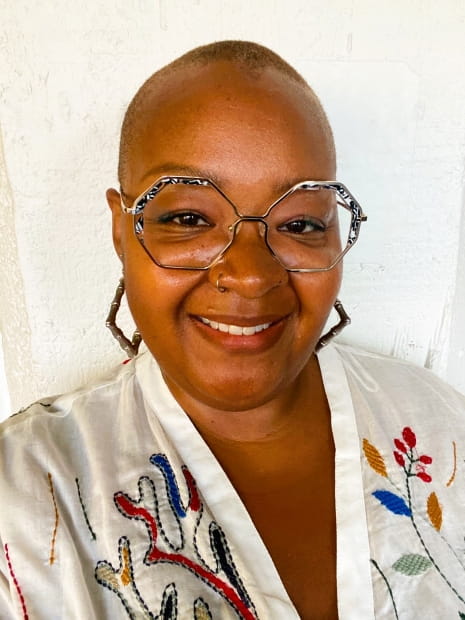
Is painting your primary medium or do you work in other forms?
I am multidisciplinary. I thought I’d be a photographer. I’m naturally good at it, but I don’t know the camera all the way through the technical aspects. I’ve also learned some print making and creating my own images and painting abstracts.
How did you get involved with the project at Randall Children’s Hospital?
I was with a group of artists in Morocco when I met Cole Reed. (Cole oversaw the project at Randall to commission artists) She loves my art, and we kept in touch after we got back in the states. She said she wanted some of my art for Randall. I studied to be a doula and I’ve helped bring a couple of kids into the world.
Can you describe the piece you created for the hospital?
It’s an image of two pregnant women standing back-to-back. I’ve always been interested in birth work and this gave me a chance to bring that with my love for art to create something that is beautiful for parents.
What impact has art had on your life?
It’s opened a lot of doors, more so than teaching. Being a professional artist and getting exposure it broadens your horizons. I feel more motivated. Even though I teach, I feel motivated to create.
How does art make you feel empowered?
The ability to express, freely express and the appreciation it brings. I love it when people love my work. I don’t even put the work on my walls if I want to sell it. You don’t necessarily have to have a forum to create.
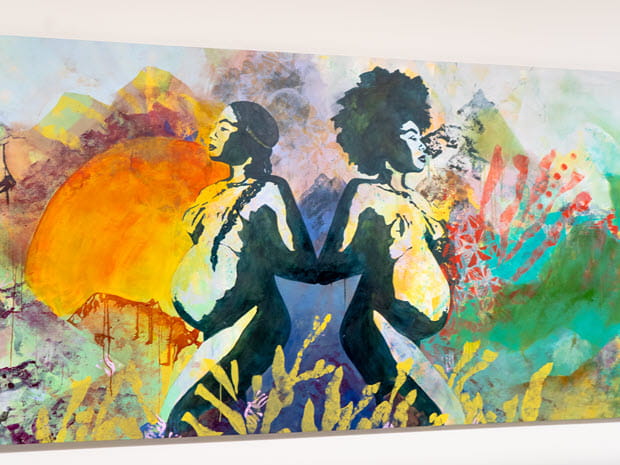
How have you grown as an artist?
Now that I’m in my 40s and I’ve been creating art for more than 10 years, I’m starting to hit the point where I know what my work is now. I feel like the first 10 years it was an experiment with different things. It’s not too far away from the style I’m doing now, but now I know my hand so much, I know where it’s going to go. Now I feel like I really am a professional artist.
How has your form of art helped or had a positive impact on the community?
I live in urban community that has an equal amount of Black, Latino and white residents. I’ve recently had a lot of public arts work that is community based. For example, I was commissioned to do a mural of two African American women, the Freeman sisters, who lived in the Liberia neighborhood. I created faces for them to tell their story. Prior to that, people didn’t know the history. Now they have an image to attract them first, then tell them the story.
I also did some structures, designed and painted, that represent the four sides of town and our center. It shows the interrelationship of our town and the surrounding world.
Why do you think it’s essential that we have more Black artist represented?
Black artists are American artists. The problem has been it’s been so one sided as to who is the standard. It’s important to have Black artists represented just as equally. We all came here the same time. I don’t think we say that enough. Their stories are just as important and part of the fabric. All of these stories need to be told in an equal set. From an educator standpoint, that has a big impact on how we interact with each other.
Who are some other Black artist that you look up to and why?
- Romare Bearden. His work tells the everyday story through the form of collage
- Kerry James Marshall
- Bisa Butler, in terms of color.
What are some of your proud moments as an artist?
The work I’ve done recently because it has been for the community. Also, I just curated an exhibit for a fellowship I’m doing. Most of the work is mine, but there are others including my mother’s work. It’s her first time showing her macrame. It validated her own artistry.
Any words or encouragement or advice for other Black artists?
Keep going and apply to everything even when you feel you don’t have the credentials. Create what you want to create. Don’t create for the sake of being trendy or appealing to a certain demographic.

